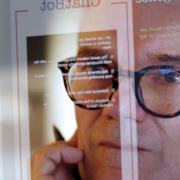Usability Engineering – a useful addon for requirements engineers
Requirements analysts will find it worth their while to make a quick detour in the direction of UX/UI, since user interfaces are what essentially determine a solution’s acceptance.
No, usability engineering is not concerned with making graphical interfaces pretty. Yes, requirements engineers, especially those involved with applications for end customers or applications with a large number of internal users, should always be concerned with usability engineering.
UX Challenges in Requirements Management
An increasingly growing challenge for requirements engineers is to functionally describe applications which not only claim to be correct and efficient, but also easy to learn (ideally no initial training at all is required), clear and understandable to users, fault-tolerant, not just for bad input but also for incorrect use, and finally attractive and helpful to users as a whole.
A pretty user interface is just one aspect involved in the understandability, operability, clarity, learnability and attractiveness of a system. Although the design of this aspect is the responsibility of the user interface designer, the process is actually carried out using traceable methods, and also requires taste and a touch of artistic design throughout.
The Solution: Usability Engineering
However, usability engineering is concerned with deriving and optimizing a system’s functional and non-functional characteristics by examining the user’s overall environment. Another aspect is to model the entire user journey and include it in system design. For example, a web shop user’s experience with that system doesn’t end when he places an order, but continues until he receives the package or support for his complaints.
In requirements engineering, we set ourselves apart (completely intentionally) from the environment not directly associated with the system, which we already learned already over the course of creating context diagrams. This allows us, but sometimes only with difficulty, to understand the user’s motives behind individual activities. In addition, requirements engineering does not examine user satisfaction over the entire use life cycle (nor beyond system limits).
Methods of requirements engineering and usability engineering complement each other perfectly in this area, and create real added value for many tasks. Spirit in Projects’ training portfolio offers basic and advanced courses for both directions, so you can selectively expand your own skill set.










